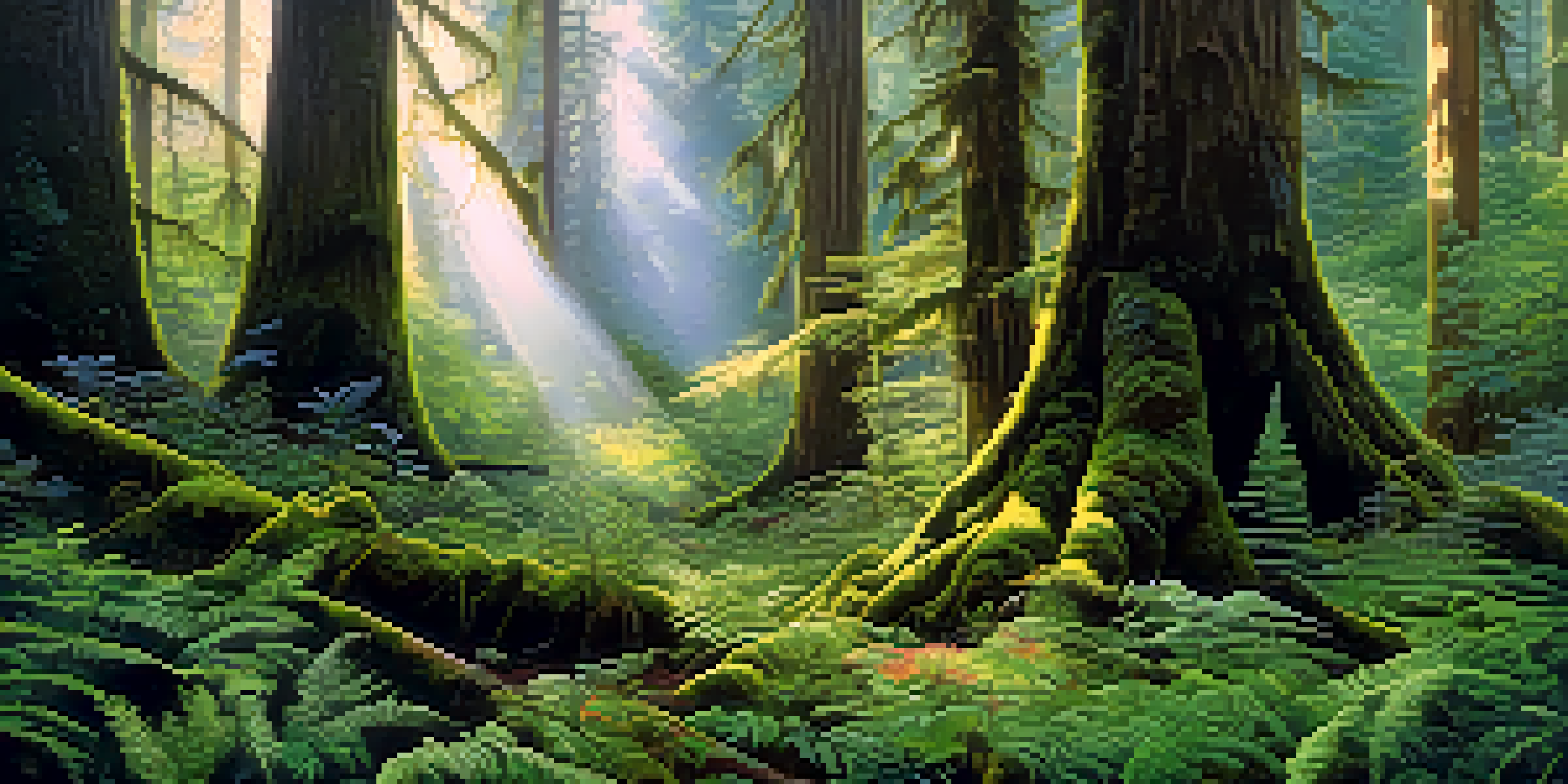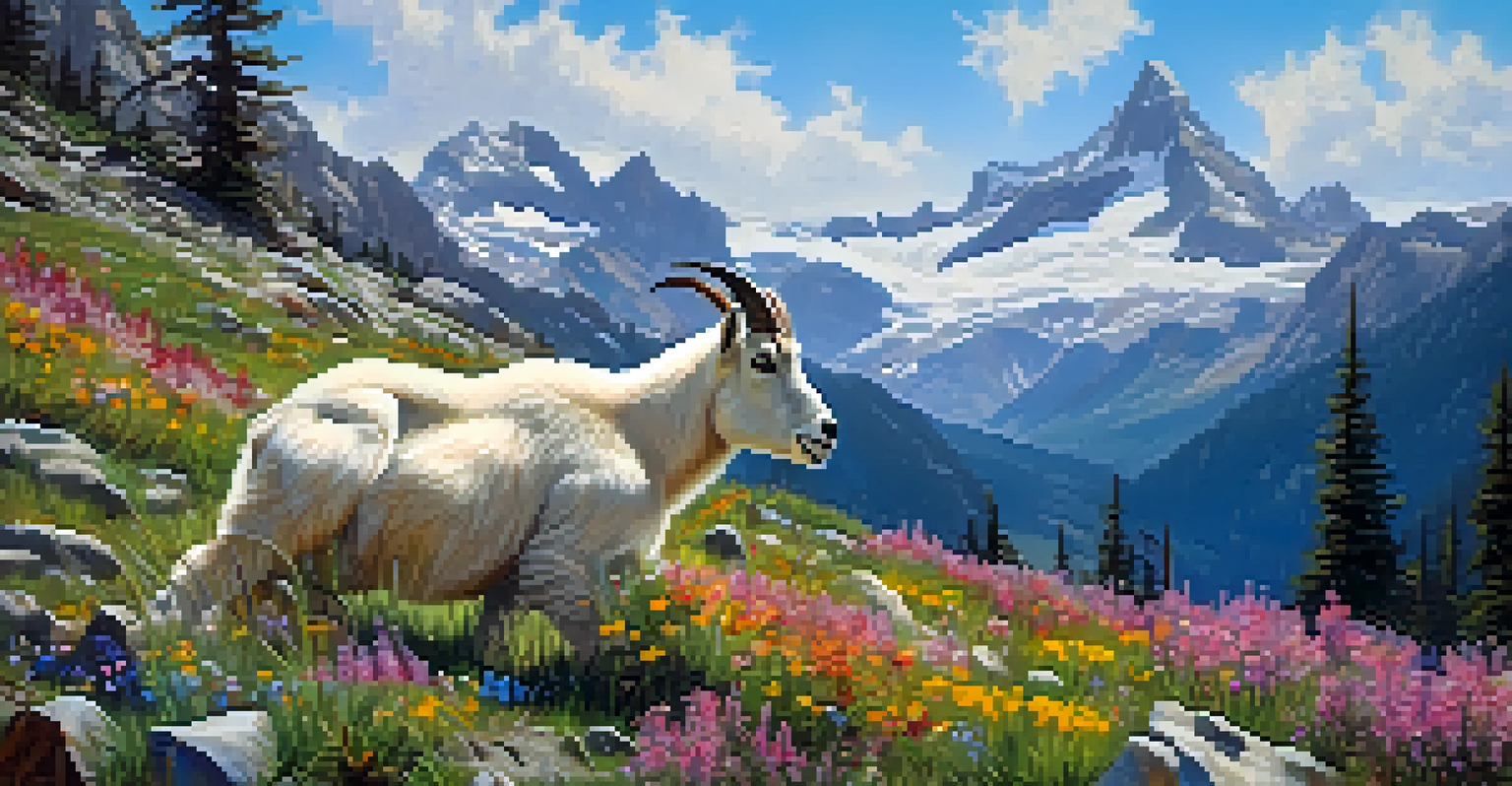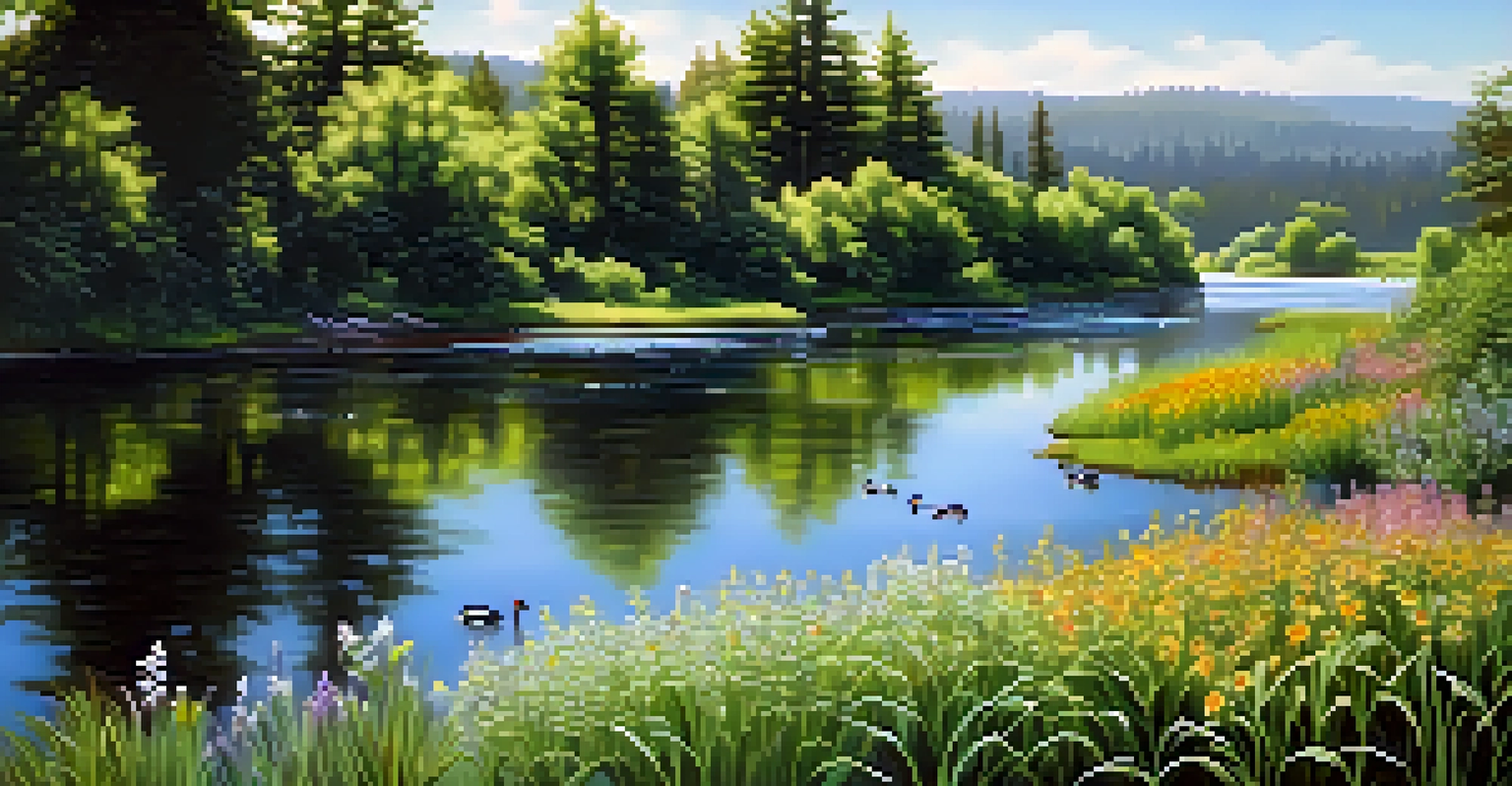Rainforests and Beyond: Exploring Washington's Unique Ecosystems

Understanding Washington's Unique Rainforest Ecosystem
Washington State is home to some of the most remarkable rainforests in the world, particularly the Hoh Rainforest in Olympic National Park. This ecosystem thrives due to the heavy rainfall it receives, which can exceed 140 inches annually. The lush greenery, towering trees, and vibrant undergrowth create a unique habitat that supports diverse wildlife, making it a true natural wonder.
In every walk with nature one receives far more than he seeks.
The rainforests are rich in biodiversity, hosting species such as the Roosevelt elk, black bears, and a variety of birds. Moss-covered trees and ferns create a magical atmosphere that feels almost otherworldly. As you wander through these ancient woods, it’s easy to understand why they are often referred to as the 'lungs of the planet'—they play a vital role in carbon sequestration and oxygen production.
Additionally, these ecosystems face challenges from climate change and human activity. Protecting these habitats is crucial not only for maintaining biodiversity but also for preserving the cultural heritage of local Indigenous tribes who have lived in harmony with these forests for centuries.
The Diverse Flora of Washington's Ecosystems
Beyond the rainforests, Washington boasts a variety of ecosystems, each with its own unique flora. From the coastal beaches to the alpine meadows, the plant life is incredibly diverse. You can find everything from towering Douglas firs in the forests to delicate wildflowers in the mountainous regions, each adapted to its specific environment.

For instance, the chaparral regions of Eastern Washington are home to shrubs and grasses that thrive in drier conditions. These plants have adapted to survive with less water, showcasing nature's incredible ability to evolve. This diversity not only adds beauty to the landscape but also supports various pollinators, such as bees and butterflies, essential for the health of our ecosystems.
Biodiversity in Washington's Ecosystems
Washington's diverse ecosystems, from rainforests to mountains, support a rich variety of plant and animal species that are essential for ecological balance.
Moreover, the seasonal changes in Washington bring a stunning transformation of plant life. Springtime blooms create a vibrant tapestry, while fall foliage offers a breathtaking display of colors, reminding us of the ever-changing beauty of nature.
Wildlife: A Glimpse into Washington's Animal Kingdom
Washington's ecosystems are teeming with wildlife, from the majestic orca whales in Puget Sound to the elusive mountain goats in the Cascades. Each species plays a vital role in maintaining the balance of their respective habitats. Observing these animals in their natural surroundings can be an exhilarating experience, connecting us to the rhythms of the natural world.
The clearest way into the Universe is through a forest wilderness.
Birdwatchers can delight in spotting an array of species, such as the endangered California condor or the colorful western tanager. The diversity of wildlife is a testament to the rich ecosystems found throughout the state. Even in urban areas, parks and green spaces provide habitats for various birds, small mammals, and insects, reminding us that nature is often just a step away.
However, many species face threats due to habitat loss and climate change. Conservation efforts are crucial to protect these animals and ensure future generations can enjoy the rich biodiversity that Washington offers.
The Role of Rivers and Streams in Ecosystem Health
Rivers and streams play a critical role in Washington's ecosystems, serving as lifelines for both wildlife and plant life. They provide essential water resources, support fish populations, and help maintain the overall health of the environment. The state's rivers, such as the Columbia and Snoqualmie, are vital to the local economy and culture, offering recreational opportunities and sustaining communities.
These waterways are also crucial for salmon migration, as they rely on clean, flowing waters to spawn. Efforts to restore and protect these river habitats are ongoing, focusing on reducing pollution and restoring natural riverbanks. Healthy rivers not only support fish populations but also improve water quality and enhance the resilience of ecosystems.
Climate Change Threatens Ecosystems
Rising temperatures and erratic precipitation patterns due to climate change disrupt the delicate balance of Washington's ecosystems and threaten biodiversity.
Moreover, rivers contribute to the overall beauty of Washington, creating stunning landscapes that attract visitors from all over. The soothing sound of flowing water and the sight of wildlife along the banks remind us of the interconnectedness of all life.
Mountains: A Unique Ecosystem Above the Tree Line
Washington's mountainous regions, including the Cascades and the Olympic Mountains, present a unique ecosystem that contrasts sharply with the lush rainforests below. As you ascend, the landscape changes dramatically, revealing rocky outcrops, alpine meadows, and glaciers. This elevation shift creates distinct habitats that support specialized plant and animal species adapted to harsher conditions.
In these alpine areas, you'll find resilient flora such as mountain heather and dwarf shrubs, which endure strong winds and cold temperatures. Wildlife here includes mountain goats and pikas, both of which have adapted to the rugged terrain. These ecosystems are crucial for studying climate change, as they often serve as indicators of environmental shifts.
The panoramic views from the mountaintops are breathtaking, offering a reminder of nature's grandeur. Hiking through these regions provides a sense of adventure and tranquility, allowing for a deeper appreciation of Washington's diverse ecosystems.
The Impact of Climate Change on Ecosystem Dynamics
Climate change poses a significant threat to Washington's ecosystems, impacting everything from rainfall patterns to species distribution. As temperatures rise and precipitation becomes more erratic, the delicate balance that sustains these ecosystems is disrupted. For instance, changes in snowpack levels affect the timing of spring runoff, which can have cascading effects on both plant and animal life.
Moreover, invasive species often thrive in changing climates, outcompeting native species and altering habitats. This can lead to a loss of biodiversity and negatively impact local ecosystems. Conservationists are working diligently to combat these challenges, focusing on preserving native habitats and restoring ecosystems to their natural state.
Conservation for Future Generations
Protecting and preserving Washington's unique ecosystems is vital for ensuring their survival and the health of our planet for future generations.
Raising awareness about climate change and its effects on our environment is crucial for fostering a sense of responsibility. By understanding the interconnectedness of these ecosystems, we can take meaningful action to protect them for future generations.
Preserving Washington's Ecosystems for Future Generations
As stewards of the environment, it’s our responsibility to protect Washington’s unique ecosystems for future generations. This involves supporting conservation efforts, participating in local clean-up initiatives, and advocating for sustainable practices. Each small action can contribute to the preservation of these vital habitats, ensuring they continue to thrive.
Education plays a crucial role in this endeavor. By learning about the ecosystems and the species they support, we can foster a greater appreciation for nature. Schools, nonprofits, and community organizations are working to engage and educate the public about the importance of biodiversity and conservation.

Ultimately, the beauty and complexity of Washington's ecosystems remind us of the interconnectedness of all life. By committing to their preservation, we can create a healthier planet for ourselves and generations to come.